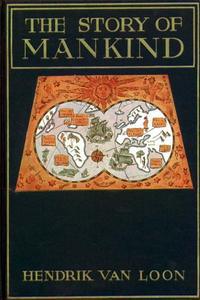Sprouts of sacred fury
It cannot be said that the fire of the Nordic blood disappeared. The same century that the berserkers disappeared began the rise of the cavalry orders: the new männerbunden of Europe. The great moments of glory enjoyed by Europe during the Middle Ages are due to them. Think of the Holy Empire, the Eastern Crusades, the Occitan civilization, the Spanish Reconquest, the Templars and the legends of the Grail. It can be said, however, that the most visible and obvious example of pagan fury had disappeared.
What happened to the traditional religious leadership in Europe? It did not disappear, but submerged in the dominant culture. And from the dormant collective unconscious in European blood it managed numerous groups that were about to overthrow the power of the Church (remember the Catharism, the Templars and the Ghibellines).
The Holy Germanic-Roman Empire (the I Reich) was a great depository of the ancestral tradition. Their emperors (like the famous Frederick Barbarossa, or his grandson Frederick II), many of them educated from their childhood by orders of cavalry, were considered heretics, antipopes and antichrists by the Church, since the majority were directly involved in unchristian activities including looting of the Vatican, pacts with orders of cavalry on the margins of the Church and dealings with Islam.
The Emperor Charles V (King of Spain and the Holy Roman-Germanic Empire, and lord of half Europe, as well as vast territories overseas) also plundered the Vatican like his Visigoth ancestors more than a thousand years before, terrorizing the Pope as if he was a vulgar outlaw. So perhaps we should ask ourselves how these men understood the Christian religion and the loyalty that they supposedly owed to the Church.
After the disastrous Thirty Years’ War (1618-1648) the Holy Empire fell definitively, being replaced by small and ridiculous bourgeois states that were plagued by the Black Death and Protestantism, and that were dedicated to the virulent persecution of heretics, burning and hanging the largest number of ‘witches’ in all of Europe, while the Turks overwhelmed the Balkans at will. Entire regions of Germany were depopulated by this paranoia. From this time also come the legends of werewolves, and in Germany many men were accused of being lycanthropes. Thousands were tortured and executed for it.
The fall of the Templars and the Holy Roman Empire marked a milestone: the mystical Middle Ages of castles and knights fell, and was replaced by the dirty era of famines, plagues, witch hunts, Puritanism, the Bible and religious fundamentalism. Also, the Infantry relieved the Cavalry as the dominant body in the battlefields, as is evident in the conquests of the Tercios (so similar in their organisation and mentality to the legions of Rome).
Of the orders of chivalry, of medieval mysticism, of the feeling of dharma and of the traditional social order, there remained the Rosicrucians and the Masons. And both ended, in turn, infiltrated by the rise of the new commercial-financial caste, the bourgeoisie, as is especially clear in modern masonry.
In the 19th century, the religiosity of Germanism began to awaken again. Europe had discovered the wisdom of the East and many sacred texts had been translated, especially from Iran and India. German archaeologists unearthed Greek cities, temples and statues. Prussia appeared, bearer of a new imperialist idea. The Second Reich appeared. Paganizing mystic groups emerged.
![]() (Wolfsangels, emblems of the werwolf from Germanic paganism.)
(Wolfsangels, emblems of the werwolf from Germanic paganism.)
And in the middle of the 20th century, the Renaissance exploded and manifested itself in the Third Reich. Adolf Hitler, whose very name means ‘noble wolf’, played in Europe a role similar to that of Lycurgus (whose name means ‘conductor of wolves’) played in Sparta. In the last days of the Third Reich, fanatical units of young guerrilla insurgents called werwolf (wolfmen) staged the last sacrifice to resist the occupation of Germany after the Second World War.
______ 卐 ______
Editor’s note: Here is precisely where visitors don’t get why I recently mentioned so many times Game of Thrones. As much as Jewish producers tried to hide the Aryan part within the author’s novels, and even invert it through feminism, a residue of the mystical Middle Ages of castles and knights leaked through the television series. In the finale all the main houses of the kingdom fell except House Stark, symbolised by the wolf: the house to which King Bran the Broken belongs, a noble wolf.

